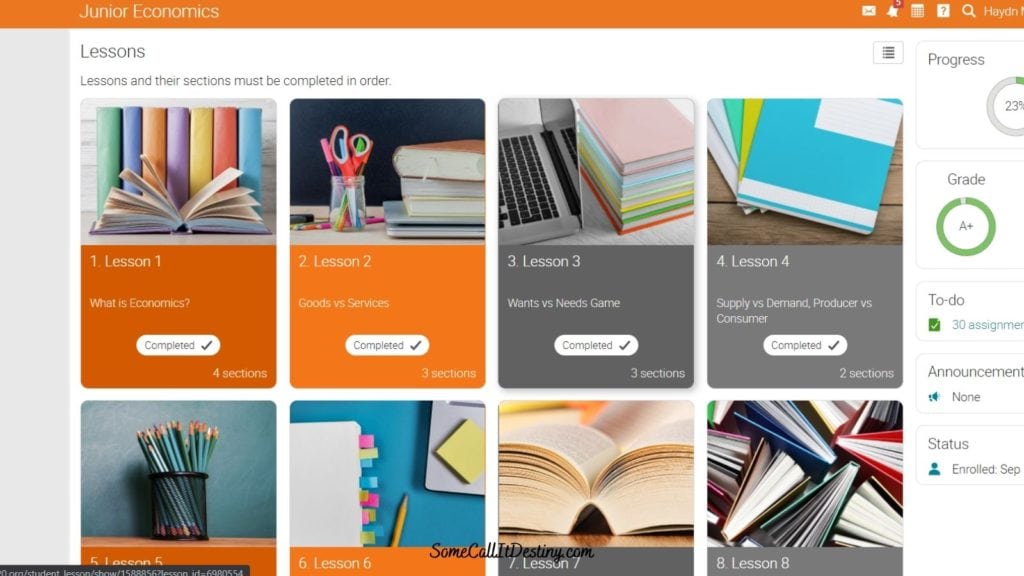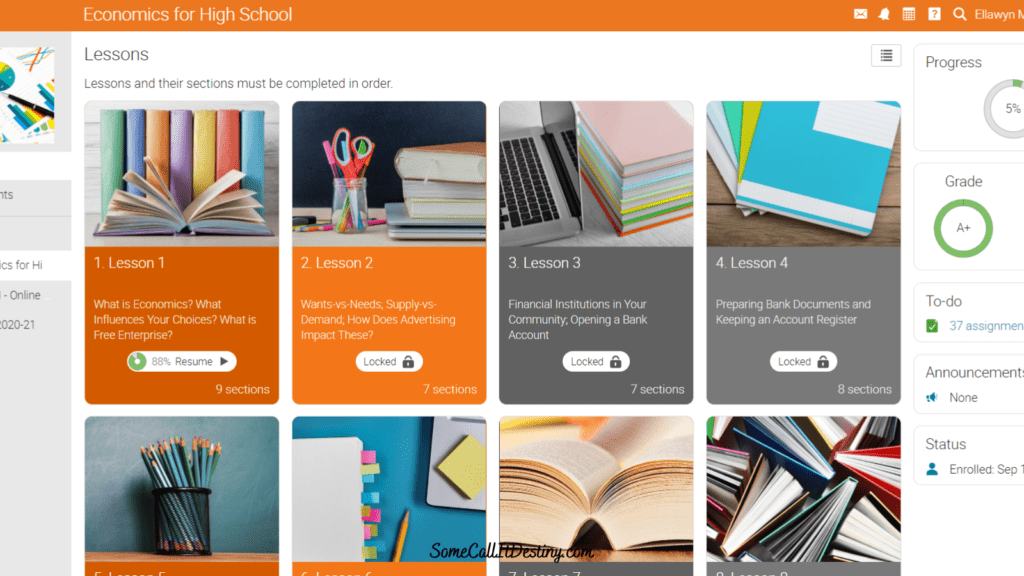Take Homeschool Economics for Junior High and High School with Mr. D Math
Disclaimer: This is a sponsored post by Mr. D Math. I received compensation for my time and honest opinion. This post contains affiliate links.
Supply and demand graphs. Micro and macroeconomics. Interest rates.
These are words and phrases that most people either haven’t heard of or don’t really understand. And yet, a basic understanding of economic principles is vital for our children to navigate the world we want them to enter.
My first exposure to economics came during an entry-level course in college I was taking to meet a general education requirement. I knew by the end of that first class I had found my passion. And while life took me in a different direction from a career outside the home, the principles I learned from my economics degree have been a great benefit.

Perhaps this is why it is so important to me my children begin to learn economic principles from a young age. Gradually building upon the knowledge they have acquired.
You see, economics impacts so many decisions made by both our local and national governments on policies home and abroad. It also plays a role in our own individual decision-making. Whether you realize it or not, the world around you functions on the principles of economics. Understanding what those principles are, how they work, and how a person’s understanding or misunderstanding leads them to make decisions is vital.
Knowledge is power and I want to equip my children with both.
This is why we have been using both the Mr. D Math Junior Economics and Mr. D Math Economics for High School courses.
Mr. D Math Junior Economics Homeschool Course
The Mr. D Math Junior Economics self-paced course is directed towards students in grades 5-8. It is the perfect introductory course for middle school students. My 6th grader, Haydn, has been working his way through the course.

The Junior Economics course is comprised of 32 lessons, which have been broken down to make it easily manageable for younger students. The lessons include videos and downloadable PDF worksheets for the student to print and complete. Grades are factored primarily on quizzes that cover the material taught in the lesson and reinforced through the worksheets.
What Does Junior Economics from Mr. D Math Cover?
Students taking the course will be introduced to economic terms making them less scary when they come across them in the real world. They also gain practical financial skills, such as how to open and maintain a bank account. At the end of the course, the students will have an introductory knowledge of the role economics plays in personal and business decisions.

This would be a great course if you have a budding entrepreneur because it equips kids with essential information for business practices. The life skills on financial literacy students learn are well worth the investment of the course.
The Mr. D Junior Economics course serves as a great primer for those students who will be taking the Economics for High School course further down the line.
Mr. D Math Economics for High School Self-Paced Course
Since Mr. D Math Economics for High School is a self-paced course, and my 8th-grade daughter has prior economic knowledge, I felt comfortable placing her in the high school course as opposed to Junior Economics.
The Economics for High School course is 16 lessons long and satisfies the high school requirement for economics. It counts as half a credit (1/2). For a high schooler, this could be done in one semester. Since my daughter is in eighth, she is working at a slower pace and will complete it over the course of a year for the same 1/2 credit. Which is just one of the benefits of Mr. D’s self-paced courses!

What Does Mr. D Math Economics for High School Cover?
The Mr. D Math Economics for High School course covers everything in the Junior Economics course more in-depth and introduces new concepts. Students will go deeper into topics that were introduced in the Junior Economics course. For example, both courses cover What is Economics? in Lesson 1; however, in the High School course, they also learn about what influences choices and about free enterprise in the same lesson.
In addition to covering important topics such as supply and demand, debt and deficit, monopolies and taxes, students will also learn valuable life skills. Students will learn about applying for jobs, comparing benefit packages, renting an apartment, and calculating interest among other things.

The knowledge they learn in their Mr. D Math Economics for High School class will directly translate to information they will need immediately upon graduation.
I don’t know about you, but I remember feeling completely lost the first time I had to choose between benefits packages. It gives me confidence knowing I am equipping my children with knowledge so they can proceed confidently in life.
Economic Principles and Finacial Knowledge
One of the things I really appreciate about these two courses is the combination of economic principles and financial literacy. Many times you get one or the other, but to really be successful, you need knowledge and understanding of both.
For High Schoolers, especially, the financial knowledge they gain is going to prepare them to enter adulthood.
What are the Biggest Differences Between Junior Economics & Economics for High School?
While the two economics courses do cover some of the same material there are some key differences.
First, you cannot give high school credit for the Junior Economics course. There is simply not enough material for credit.
Second, the high school course goes deeper into topics than the middle school course. Students cover and are expected to know a wider range of material. Videos and worksheets are also different.
Third, even though the classes are self-paced, students taking the high school course can expect to spend longer working through and completing assignments.

Some Questions You Might Have
Should I have my eighth-grader just take the high school course?
This depends a lot on your student. We chose to have our daughter take the high school course because she already had a background in the topics being covered in the Junior Economics course. Plus, she is capable of handling high school-level work.
If you have an advanced eighth-grader who is capable of high school-level work, you might consider doing the high school course. Since it’s self-paced, they can always go slow and take as long as they need to cover the material.
Is the Junior Economics Course worth it if everything is covered in Economics for High School? Should we just wait?
I definitely believe taking the Junior Economics course in middle school is worth it. It will give students an edge and prepare them for the high school course later on. The concepts they learn are every bit as relevant to middle schoolers are they are for high schoolers.
I plan on having my son take the Economics for High School class in a couple of years. By then, he will need the refresher provided at the beginning of lessons.
Also, economics is a subject that can feel daunting to many. Having students ease into it in middle school makes it less intimidating in high school. It’s like ready the junior adaptation of a classic so you know what’s going on when you get ready to read the real one.
Check Out More Offerings on Mr. D Math
Mr. D Math offers a variety of self-paced and live classes for homeschool students. We have found all his classes to be high quality and my kids really enjoy them. Here are some of my other Mr. D Math posts if you want to learn more.
How to Easily Learn ASL in Your Homeschool with Mr. D Math
The Best Live Online Algebra Course for Homeschooling High School






